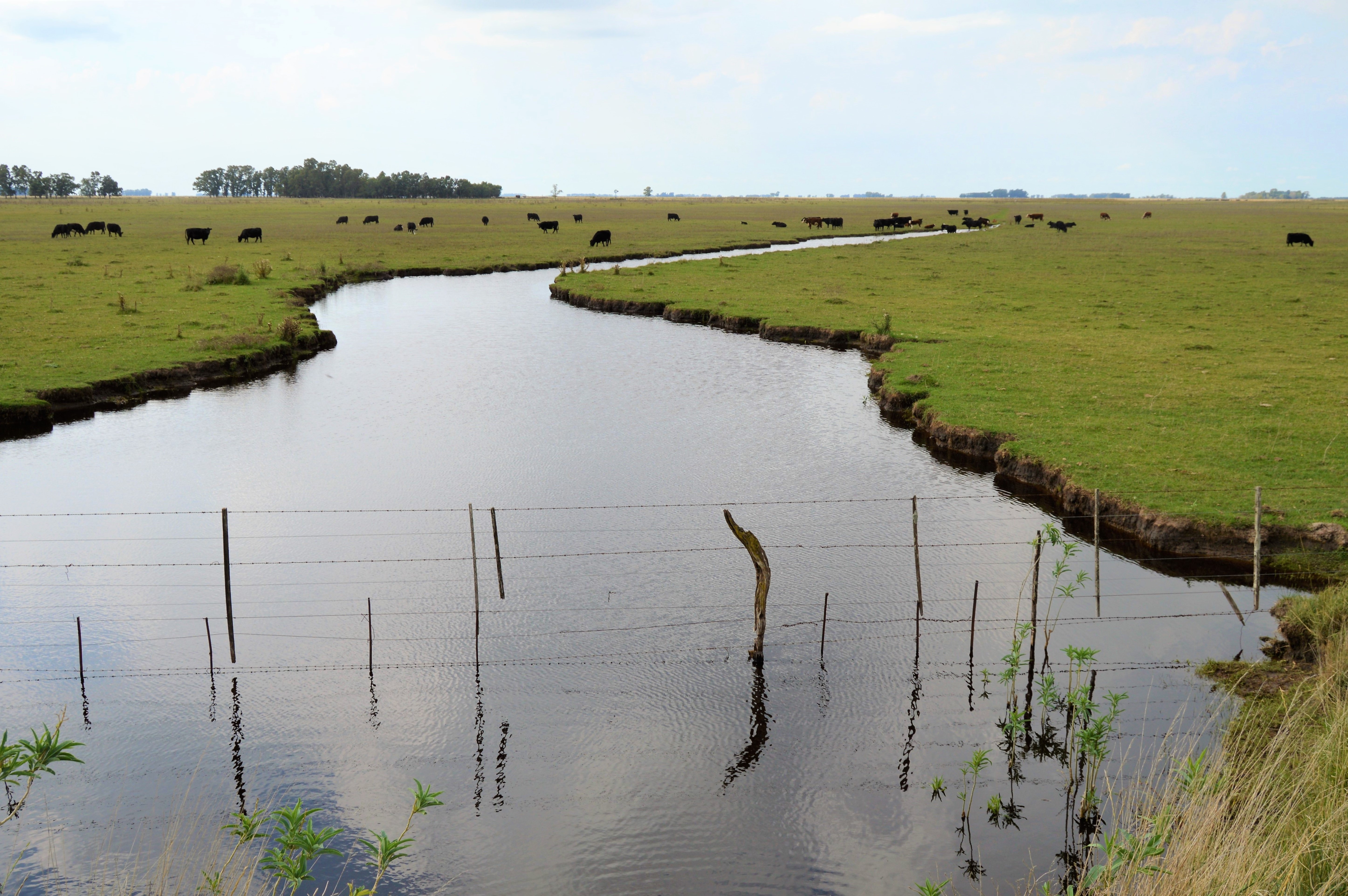Particular applications of the health risk assessment methodology due to the presence of substances in water
DOI:
https://doi.org/10.35305/curiham.ed24.e08Keywords:
Space Risk Assessment, Scenario Integration, Risk PrioritizationAbstract
The objective of this work was to carry out an analysis of quantitative studies of health risks associated with substances present in water, in relation to their spatial representation, integration of different exposure scenarios and estimates of health risks in critical environmental areas. Different applications of the USEPA health risk assessment methodology, implemented in the province of Buenos Aires, Argentina, were analyzed. From the study, it was observed that these tools have important potential, beyond certain limitations. Spatialized risk assessments, by estimating risk based on exposure information distributed in space, allow a more complete and realistic overview to be offered. In addition, the combination of different exposure scenarios, such as residential and school scenarios, provides a more comprehensive view of health risks. In the case of the Matanza-Riachuelo river basin, risks associated with contaminants such as chromium and nitrate have been evaluated, which facilitates the prioritization of risks in critical contexts and contributes to informed decision-making.
Downloads
References
Carmuega, E. (2015). Hidratación saludable. Centro de Estudios sobre Nutrición Infantil. https://cesni-biblioteca.org/wp-content/uploads/2018/09/HidratacionSaludable.pdf
Ceballos, E., Dubny, S., Othax, N., Zabala, M. E. y Peluso, F. (2021). Assessment of human health risk of chromium and nitrate pollution in groundwater and soil of the Matanza-Riachuelo River Basin, Argentina. Exposure and Health, 13(3), 323-336. https://doi.org/10.1007/s12403-021-00386-9
Chen, J., Wu, H., Qian, H. y Gao, Y. (2017). Assessing nitrate and fluoride contaminants in drinking water and their health risk of rural residents living in a semiarid region of Northwest China. Exposure and Health, 9, 183-195. https://doi.org/10.1007/s12403-016-0231-9
Decisioneering (2007). Crystal Ball Academic Edition v7.0. Decisioneering, Inc. https://dssresources.com/vendorlist/vendorselect.php?n=7
Giri, S. y Singh, A. K. (2015). Human health risk assessment via drinking water pathway due to metal contamination in the groundwater of Subarnarekha River Basin, India. Environmental Monitoring and Assessment, 187, 63. https://doi.org/10.1007/s10661-015-4265-4
Instituto de Hidrología de Llanuras (s.f.). Herramientas de evaluación de la calidad del agua según usos. https://ihlla.conicet.gov.ar/area-hidroambiental/
Jiménez-Oyola, S., Escobar Segovia, K., García-Martínez, M. J., Ortega, M., Bolonio, D., García-Garizabal, I. y Salgado, B. (2021). Human health risk assessment for exposure to potentially toxic elements in polluted rivers in the Ecuadorian Amazon. Water, 13(5), 613. https://doi.org/10.3390/w13050613
Khan, R., Saxena, A., Shukla, S., Sekar, S., Senapathi, V. y Wu, J. (2021). Environmental contamination by heavy metals and associated human health risk assessment: a case study of surface water in Gomti River Basin, India. Environmental Science and Pollution Research, 28, pp. 56105–56116. https://doi.org/56105-56116. 10.1007/s11356-021-14592-0
Lu, S. Y., Zhang, H. M., Sojinu, S. O., Liu, G. H., Zhang, J. Q. y Ni, H. G. (2015). Trace elements contamination and human health risk assessment in drinking water from Shenzhen, China. Environmental Monitoring and Assessment, 187, 1-8. https://doi.org/10.1007/s10661-014-4220-9
National Research Council (1983). Risk Assessment in the Federal Government: Managing the Process. National Research Council. National Academic Press, Washington DC, USA. https://doi.org/10.17226/366
Othax N. (2013). Análisis del riesgo sanitario por contaminantes presentes en los recursos hídricos de las ciudades de Azul y de Tres Arroyos. Tesis doctoral. Universidad Nacional de Luján.
Othax, N. y Peluso, F. (17 al 20 de septiembre de 2013). Evaluación del riesgo por fluoruros en agua subterránea somera a partir de la ingesta local en Azul, Buenos Aires, Argentina. VIII Congreso Argentino de Hidrogeología y VI Seminario Latinoamericano sobre Temas Actuales de la Hidrología Subterránea, La Plata. https://sedici.unlp.edu.ar/bitstream/handle/10915/104077/Documento_completo.pdf-PDFA.pdf?sequence=1&isAllowed=y
Othax, N., Peluso, F. y Gonzalez Castelain, J. (2014). Riesgo a la salud integrado por fluoruros, nitratos y arsénico en agua subterránea: caso del partido de Tres Arroyos, Argentina. Revista Internacional de Contaminación Ambiental, 30(1), pp. 27-41. https://www.revistascca.unam.mx/rica/index.php/rica/article/view/29876
Pasqualini, M. F., Montania, E. F., Hepp, Y., Antolini, L., Finkelstein, J. Z. y García, S. I. (2019). Mapa de riesgo sanitario ambiental de la Cuenca-Matanza Riachuelo (Argentina). Una metodología para priorizar intervenciones. Revista de Salud Ambiental, 19(2), 148-158. https://ojs.diffundit.com/index.php/rsa/article/view/955
Peluso, F., Gonzalez Castelain, J., Rodríguez, L. y Othax, N. (2012). Assessment of the chemical quality of recreational bathing water in Argentina by health risk analysis. Human and Ecological Risk Assessment: An International Journal 18(6), 1186-1215. http://dx.doi.org/10.1080/10807039.2012.722801
Peluso, F., Gonzalez Castelain J., Dubny S., Othax N., Masson I. (30 de agosto de 2016). El estudio de la calidad del agua superficial. UNICEN. https://www.unicen.edu.ar/content/el-estudio-de-la-calidad-del-agua-superficial
Peluso, F., Masson, I., Gonzalez Castelain, J., Othax, N. y Dubny, S. (2016). Uncertainties in age- and gender-based health risk assessment for recreational bathing: arsenic in Del Azul Stream, Argentina. Human and Ecological Risk Assessment: An International Journal 22(3), 753-774. https://doi.org/10.1080/10807039.2015.1107468
United States Environmental Protection Agency (1989). Risk Assessment Guidance for Superfund. Volume 1: Human Health Evaluation Manual. EPA/540/1-89/002. Washington DC, USA. https://www.epa.gov/sites/default/files/2015-09/documents/rags_a.pdf
United States Environmental Protection Agency (1992). Guidelines for exposure assessment. EPA/600/Z-92/001. Federal Register 57(104): 22888–938. https://www.epa.gov/sites/default/files/2014-11/documents/guidelines_exp_assessment.pdf
United States Environmental Protection Agency. (2003). Framework for cumulative risk assessment. EPA/630/P-02/001F. Risk Assessment Forum, United States Environmental Protection Agency. Washington DC. 129 p. https://www.epa.gov/sites/default/files/2014-11/documents/frmwrk_cum_risk_assmnt.pdf
United States Environmental Protection Agency. (2004). Risk Assessment Guidance for Superfund Volume I: Human Health Evaluation Manual (Part E, Supplemental Guidance for Dermal Risk Assessment). EPA/540/R/99/005. Washington, DC, USA. 156 p. https://www.epa.gov/sites/default/files/2015-09/documents/part_e_final_revision_10-03-07.pdf
United Stated Environmental Protection Agency. (2024a). Métodos, modelos, herramientas y base de datos. Recuperado el 9 de diciembre de 2024. https://espanol.epa.gov/espanol/metodos-modelos-herramientas-y-base-de-datos#eval
United Stated Environmental Protection Agency. (2024b). Conducting a Human Health Risk Assessment. Recuperado el 9 de diciembre de 2024. https://www.epa.gov/risk/conducting-human-health-risk-assessment
Wang, Y., Xin, C., Yu, S., Xie, Y., Zhang, W. y Fu, R. (2022). Health risk assessment based on source identification of heavy metal (loid) s: a case study of surface water in the Lijiang river, China. Toxics, 10(12), 726. https://doi.org/10.3390/toxics10120726
Zhao, L., Gong, D., Zhao, W., Lin, L., Yang, W., Guo, W., Tang, X. y Li, Q. (2020). Spatial-temporal distribution characteristics and health risk assessment of heavy metals in surface water of the Three Gorges Reservoir, China. Science of the Total Environment, 704, 134883. https://doi.org/10.1016/j.scitotenv.2019.134883
Published
How to Cite
Issue
Section
License

This work is licensed under a Creative Commons Attribution-NonCommercial-ShareAlike 4.0 International License.



























